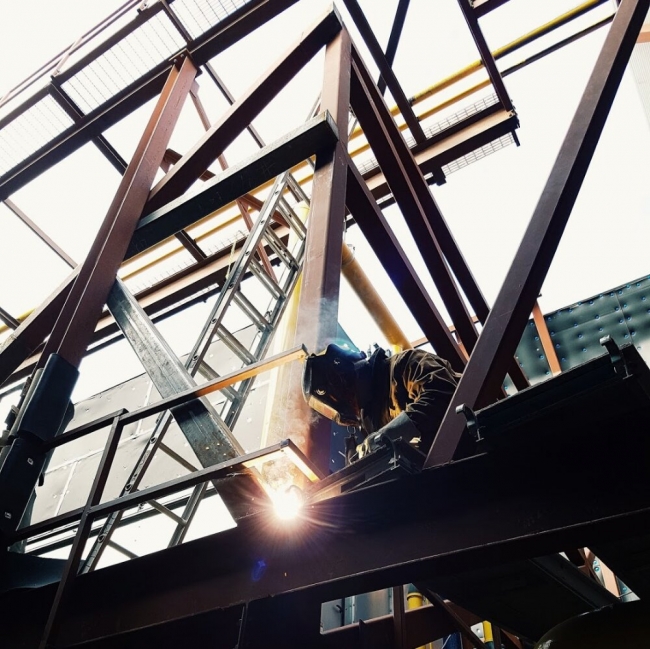
Steel structures are the backbone of modern construction. An essential part of any building - from industrial plants and warehouses to skyscrapers - these metal structures provide a strong and reliable framework. But how do they achieve their strength and stability while forming reliable connections?
That depends on the connection method used while fabricating steel structures. Two primary methods are favored by contractors, which include welding and bolting. Each of these methods is not without its advantages as well as limitations. This necessitates choosing the right method based on multiple factors, which include but are not limited to cost, efficiency, structural requirements, and environmental conditions.
In this blog, we’ll dissect both welding and bolting and find out if steel structure fabricators prefer one over the other.
Welding involves melting and fusing two steel components together with the application of heat at the contact point. Once cooled, the metal solidifies into a single, strong structure. Steel structure fabricators use a few different types of welding, which are as follows:
Structural welding offers a set of benefits, which can make it the preferred choice for fabricators. These advantages are:
Structural welding has certain limitations too. For example, it can be a very time-consuming process, requiring skilled labor and precise execution. It can also be costly and difficult to repair. What’s more, welding can be impractical for on-site projects during challenging conditions such as wind, rain, snow etc. Additionally, there’s also the risk of deformation during the application of heat.
Bolting is a connection method that has been used since time immemorial. This simple method involves the fastening of two components together with the help of heavy-duty nuts and bolts. A highly flexible method, bolting can be of several types. Let’s explore:
Transfer force synthesis bolted connections:
Bolted connections on type of force:
Force mechanism bolted connections:
Bolting is fast and quick, thus reducing assembly time on-site. Since it’s not dependent on highly skilled laborers, bolting can be a very cost-effective connecting method. It doesn’t require specialized equipment, making both repairs and inspection both easy and convenient. A simple tightening of the bolt or replacing it is enough to fix loose connections. What’s more, it’s modular and flexible and can be easily disassembled, thereby enabling relocation when needed.
Advantageous as it may be, bolting also results in weaker joints, which may cave under stress. Since nuts and bolts are visible, bolting might not be very visually appealing either. Moreover, bolts can come loose over time due to repeated vibrations. There can also be hole alignment issues during installation, which can potentially delay the assembly process.
Choosing between welding and bolting is entirely dependent on project requirements. That said, if high-strength connections are a priority, welding is a better choice. So if you’re looking for structural welding services in the GTA, we’d suggest giving us a call. At Weld Rich and Steel, we have a team of professional and highly skilled welders who can accomplish the most complex of tasks. Contact us today to work with the best welders in Toronto.